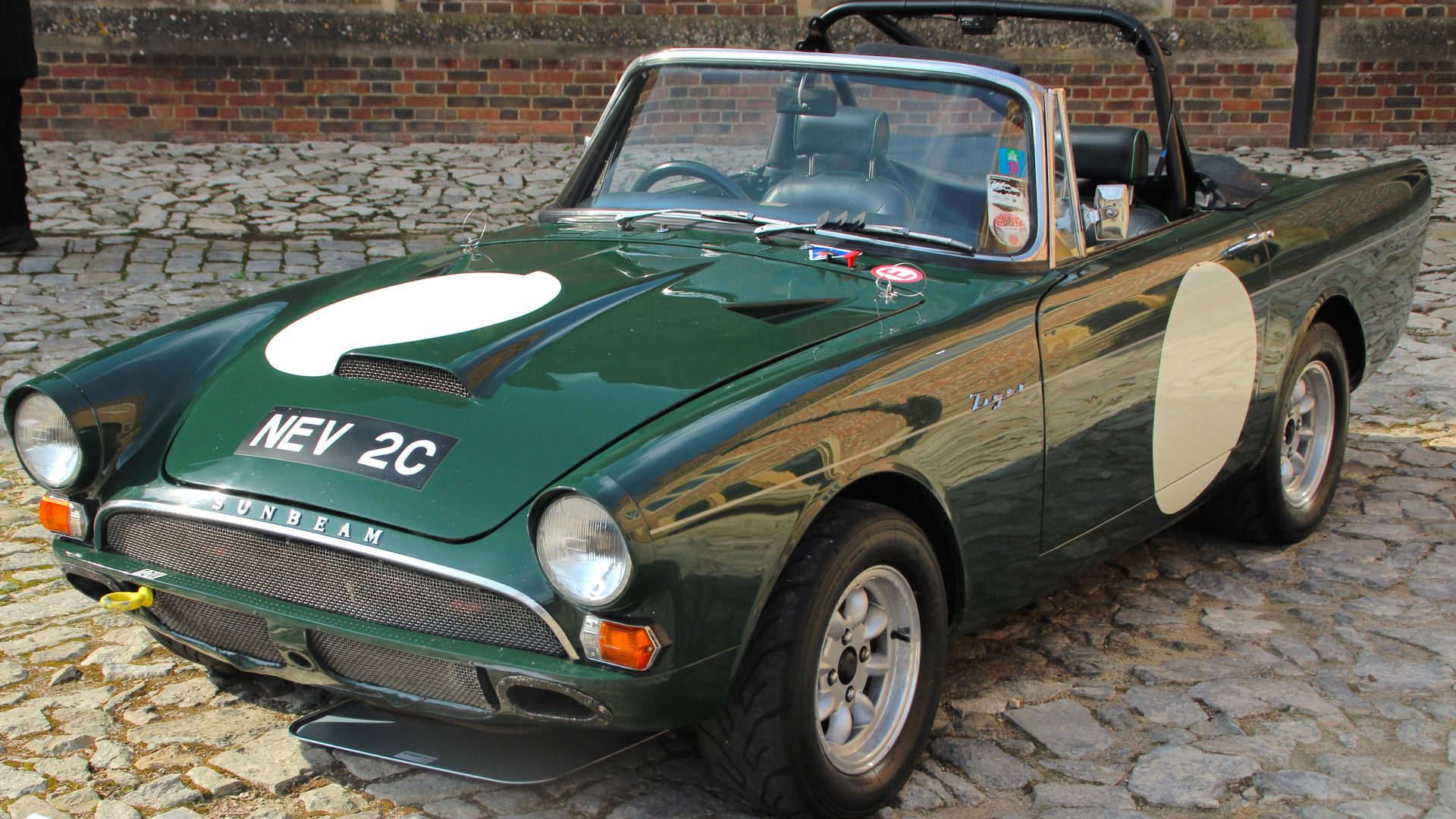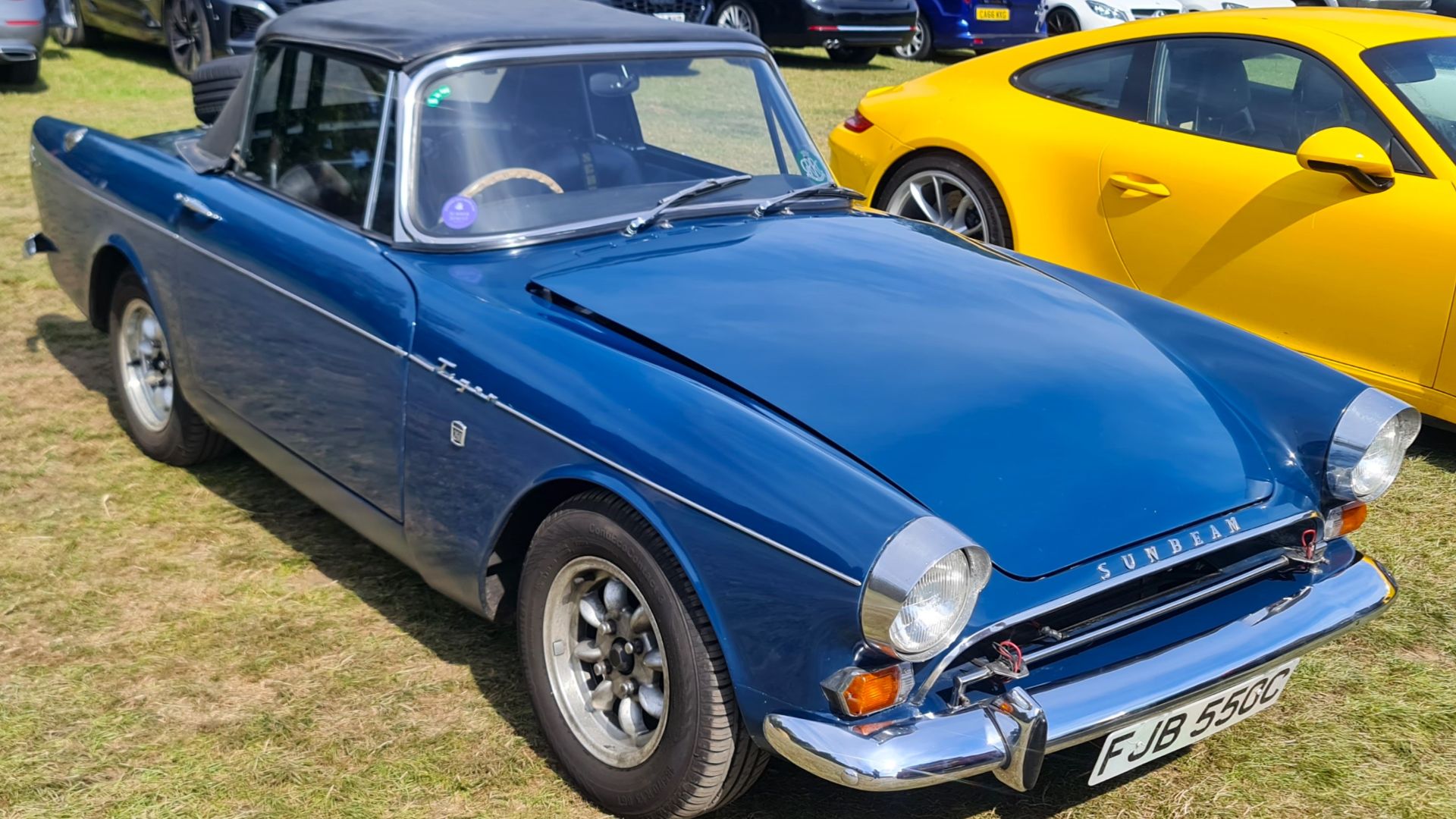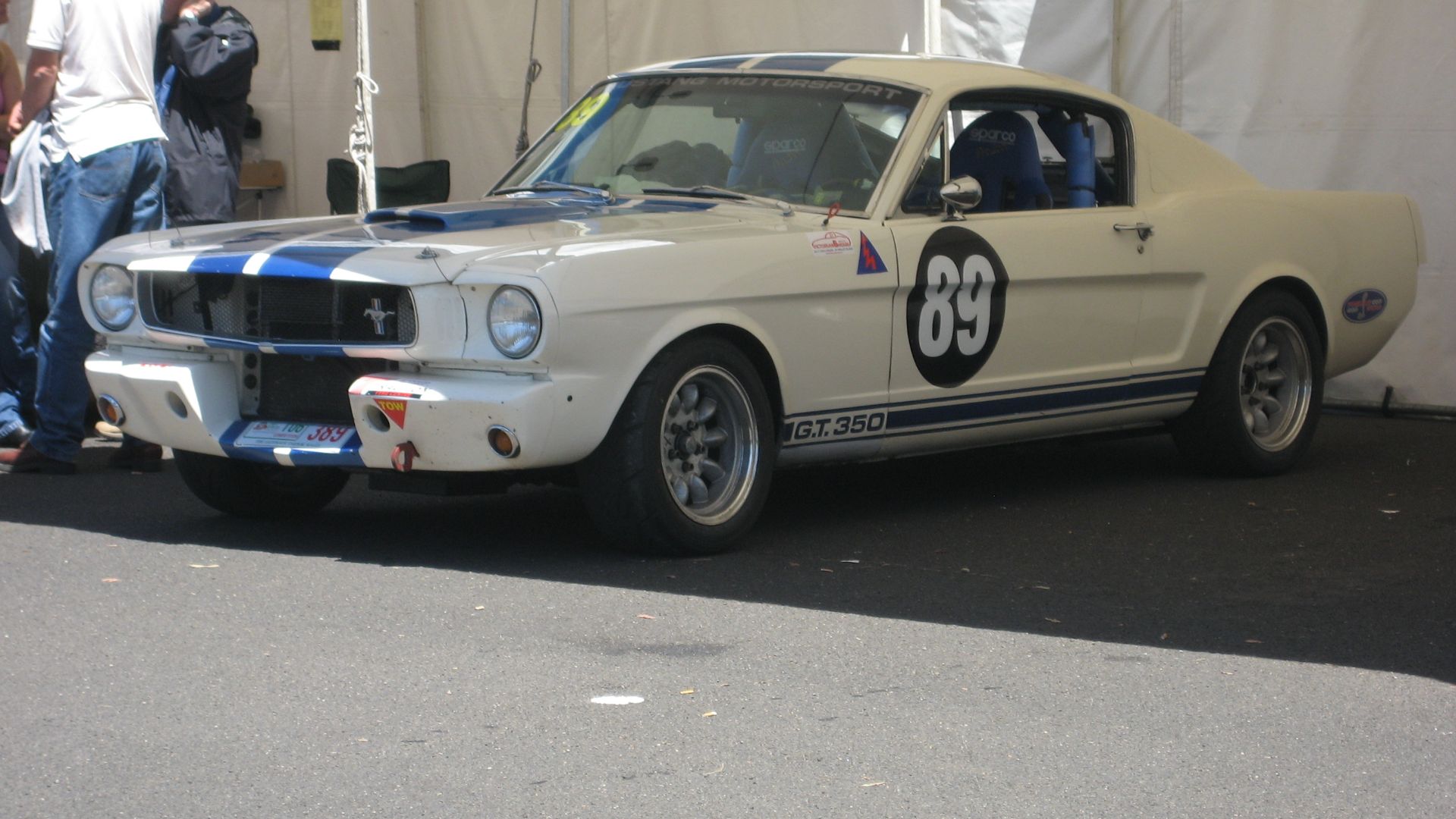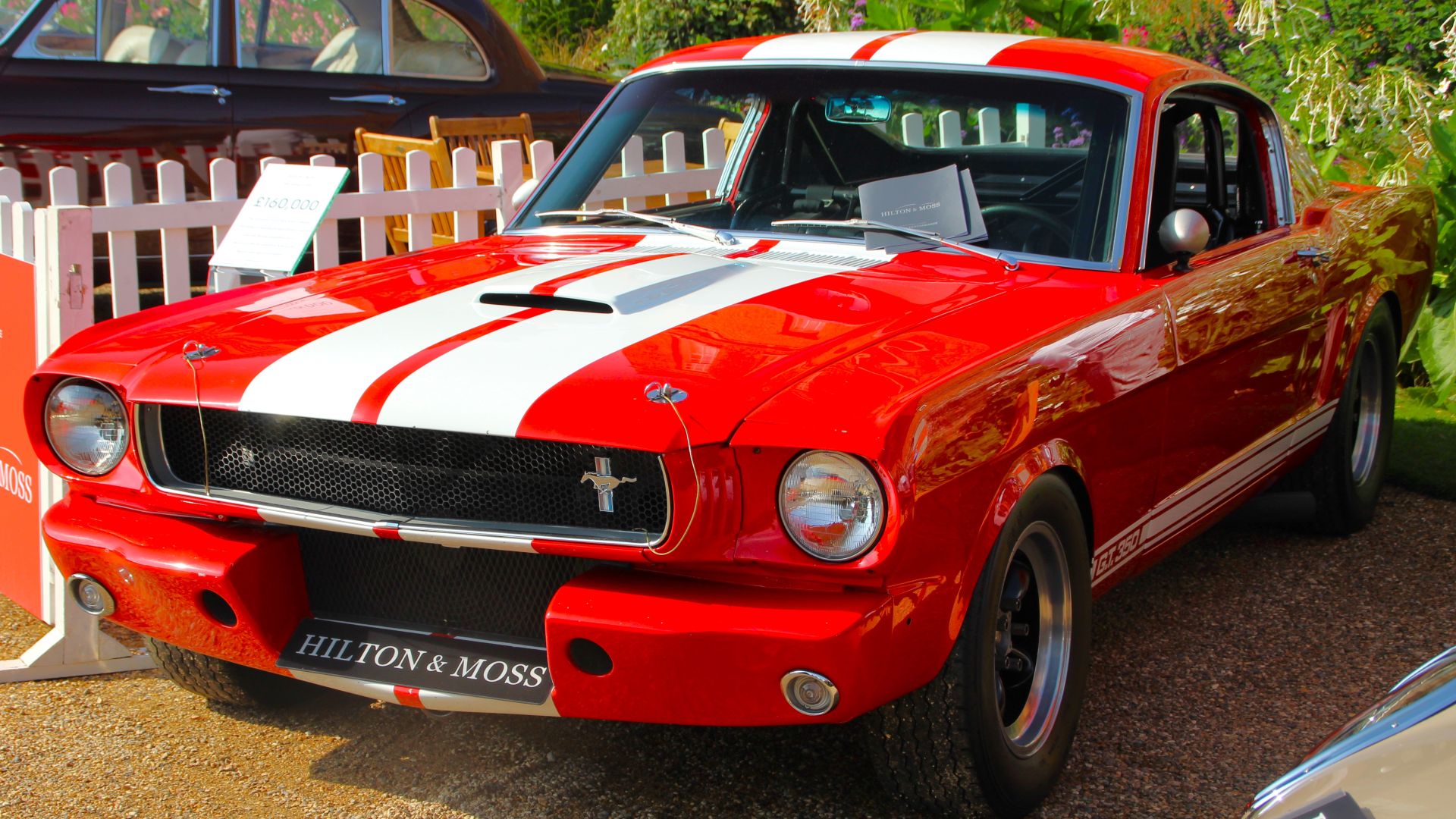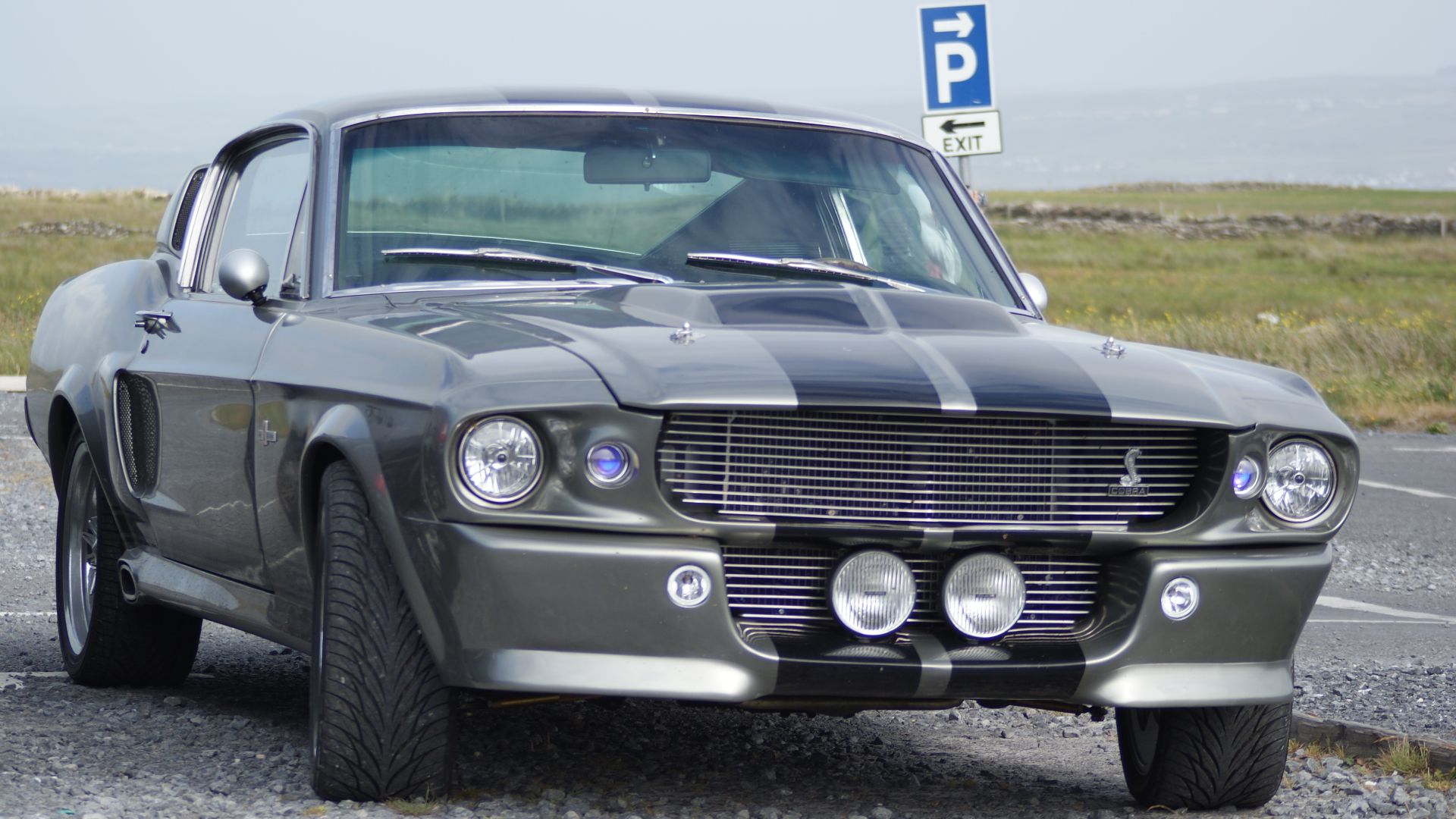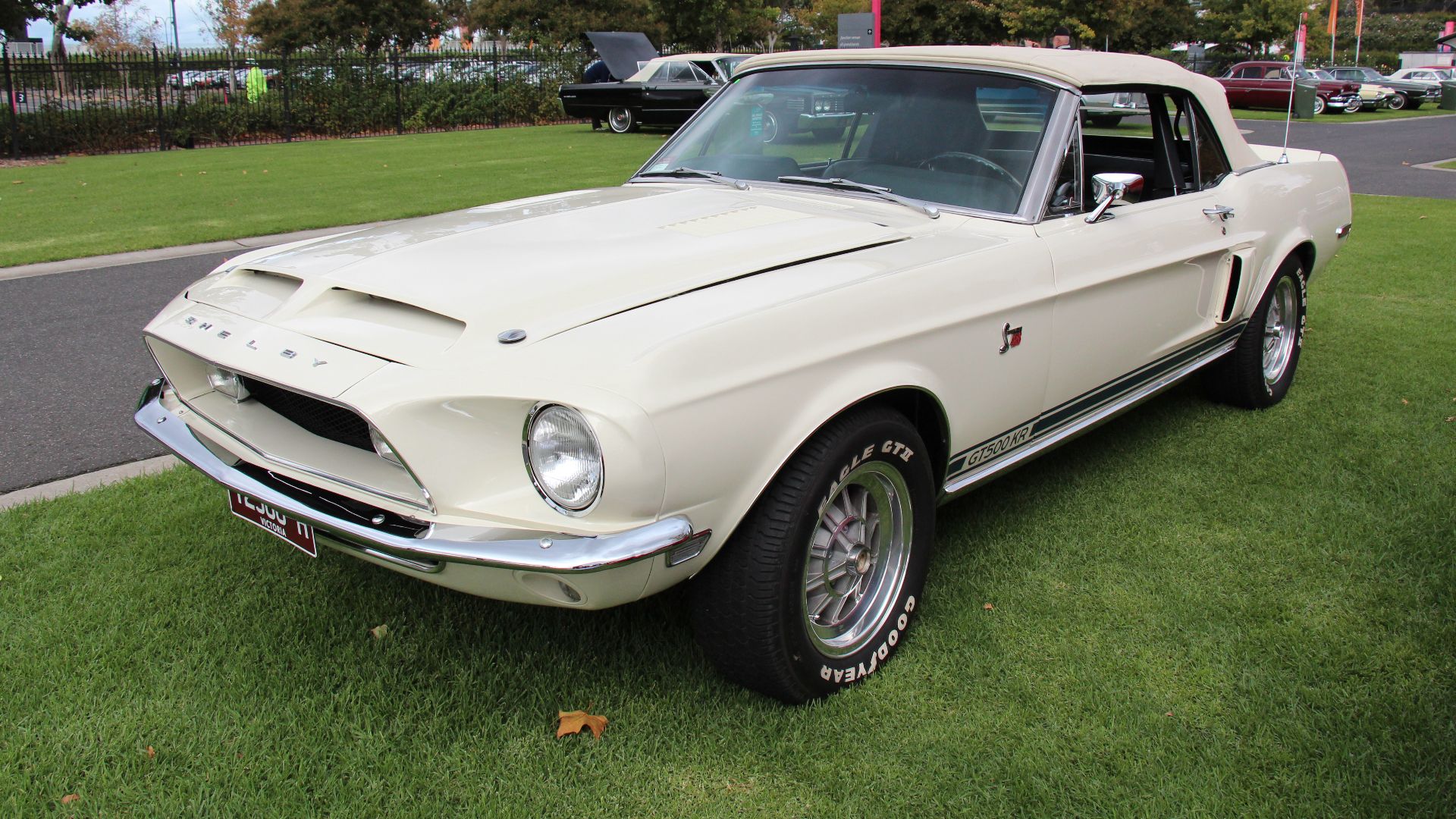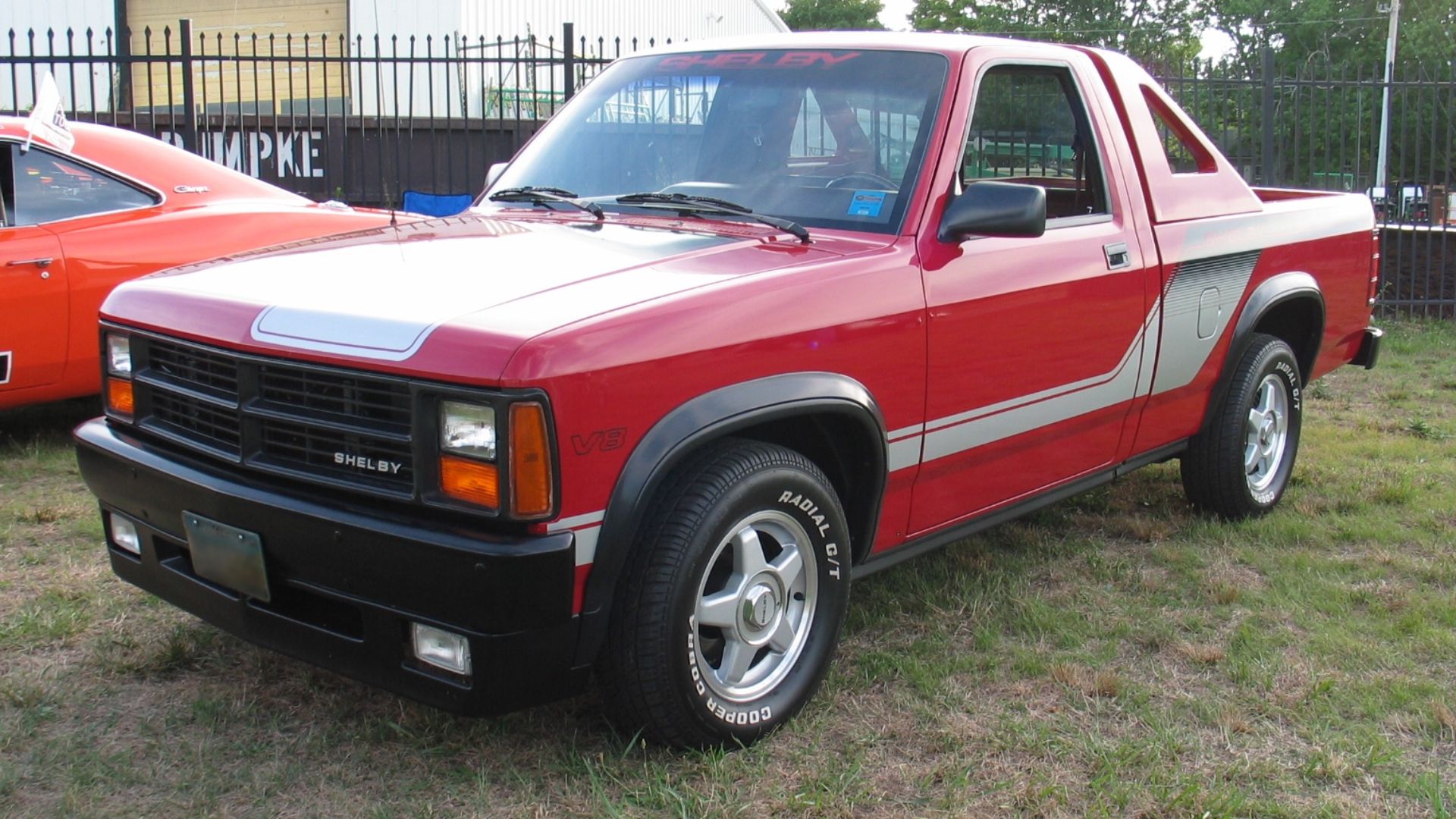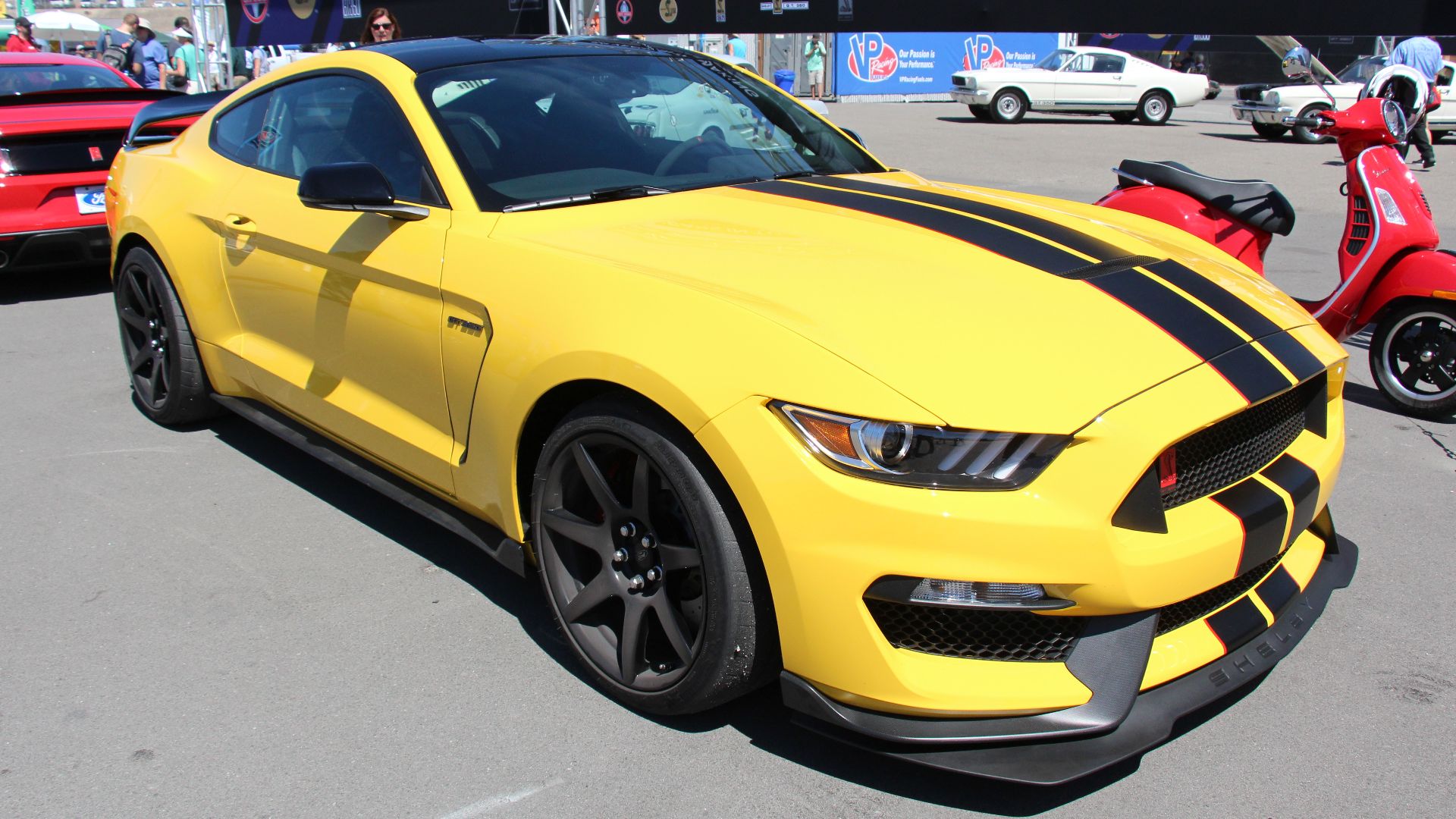Switching Tracks
Carroll Shelby was a force on the racetrack, but heart problems led to a retirement of sorts. He’d already tried his hand at car design, so when he gave up on racing cars, he started creating them. Here’s a gallery of where his passions led him. But first, let’s understand the man.
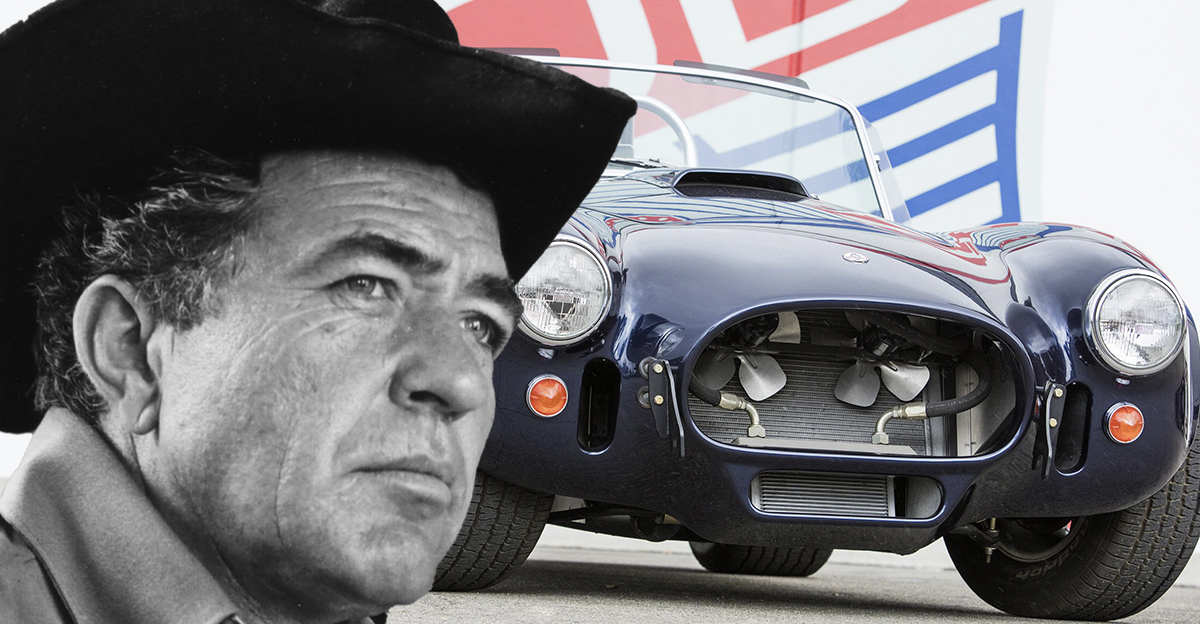
Making It Tick
They grow ’em big in Texas, including ambition. Shelby grew up in rural Texas, and quickly turned his budding talents to cars and what makes them tick. He had two ways to make a car go faster. First, he’d get under the hood and use his skills as a mechanic. And then he’d get behind the wheel.
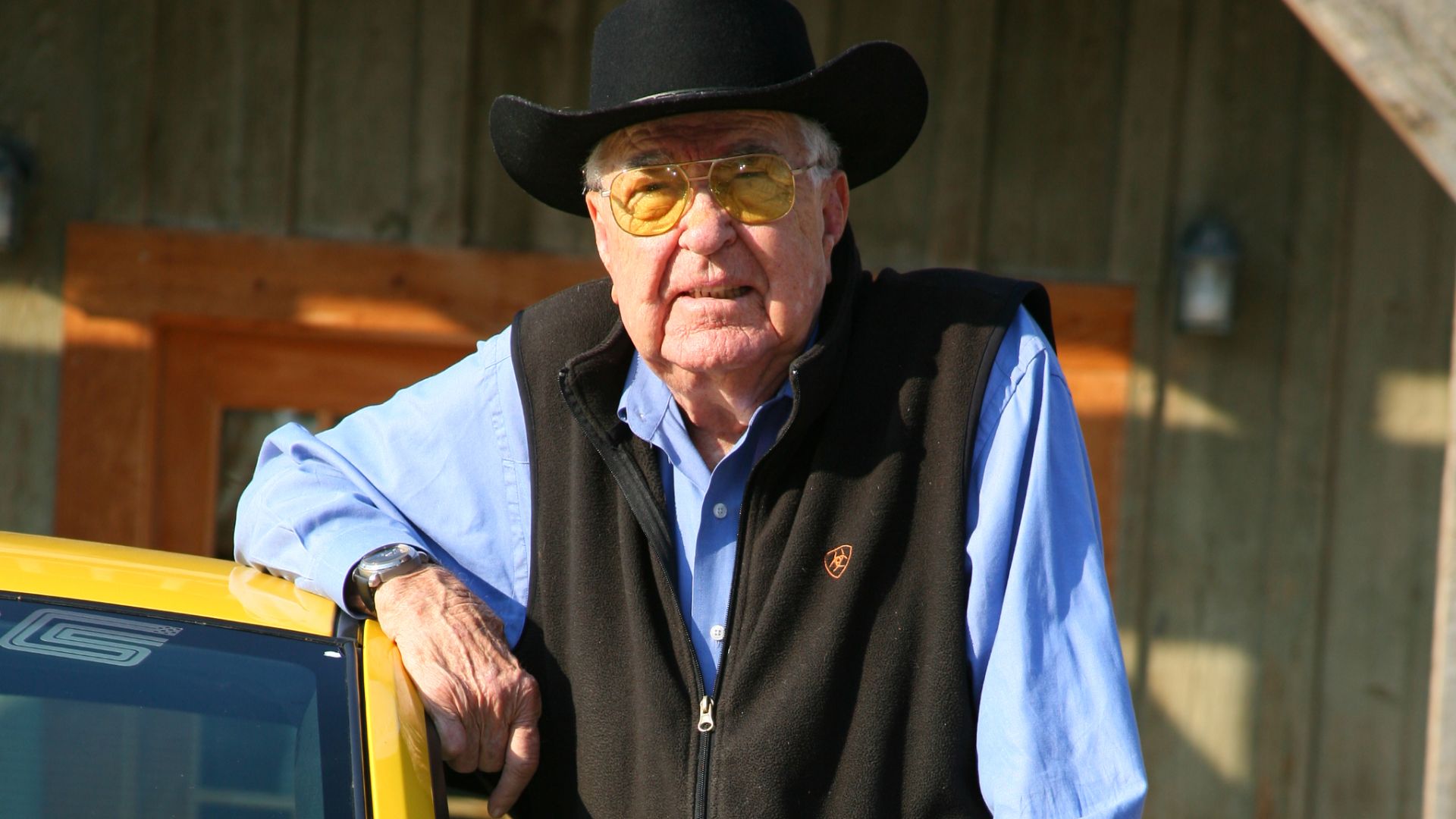 Bwilliams85, Wikimedia Commons
Bwilliams85, Wikimedia Commons
Racing Triumph
After failing as a chicken farmer, Shelby would make his way through the 1950s to triumph. He hit the racing circuits—first as an amateur, building such a name that Maserati and Ferrari liked what they saw. He ended the decade by winning the 24 Hours of Le Mans in an Aston Martin.
Amazing Finish
Winning Le Mans in 1959 was an amazing feat, not just for showcasing Shelby’s skills, but also for overcoming serious health issues. His heart was not healthy, and the agony he felt could be immense. As a result, he often had to take nitroglycerin to ride the pain and race the cars.
Shifting Over
The year after his triumph, he came close to calamity too many times for his doctors’ comfort. If he kept on riding with the pain, he’d be risking life and limb in a fiery end on the racetrack. Fortunately, he saw the light and made a shift. And he’d already shown he could switch lanes.
 Evening Standard, Getty Images
Evening Standard, Getty Images
1959 Scaglietti Corvette
A fellow Texan, oil tycoon Gary Laughlin, got tired of repairing his Ferraris, and wondered about getting a souped-up Corvette. He knew Jim Hall and Carroll Shelby, and it was Shelby who convinced Chevrolet head Ed Cole to grab three Corvette chassis off the assembly line.
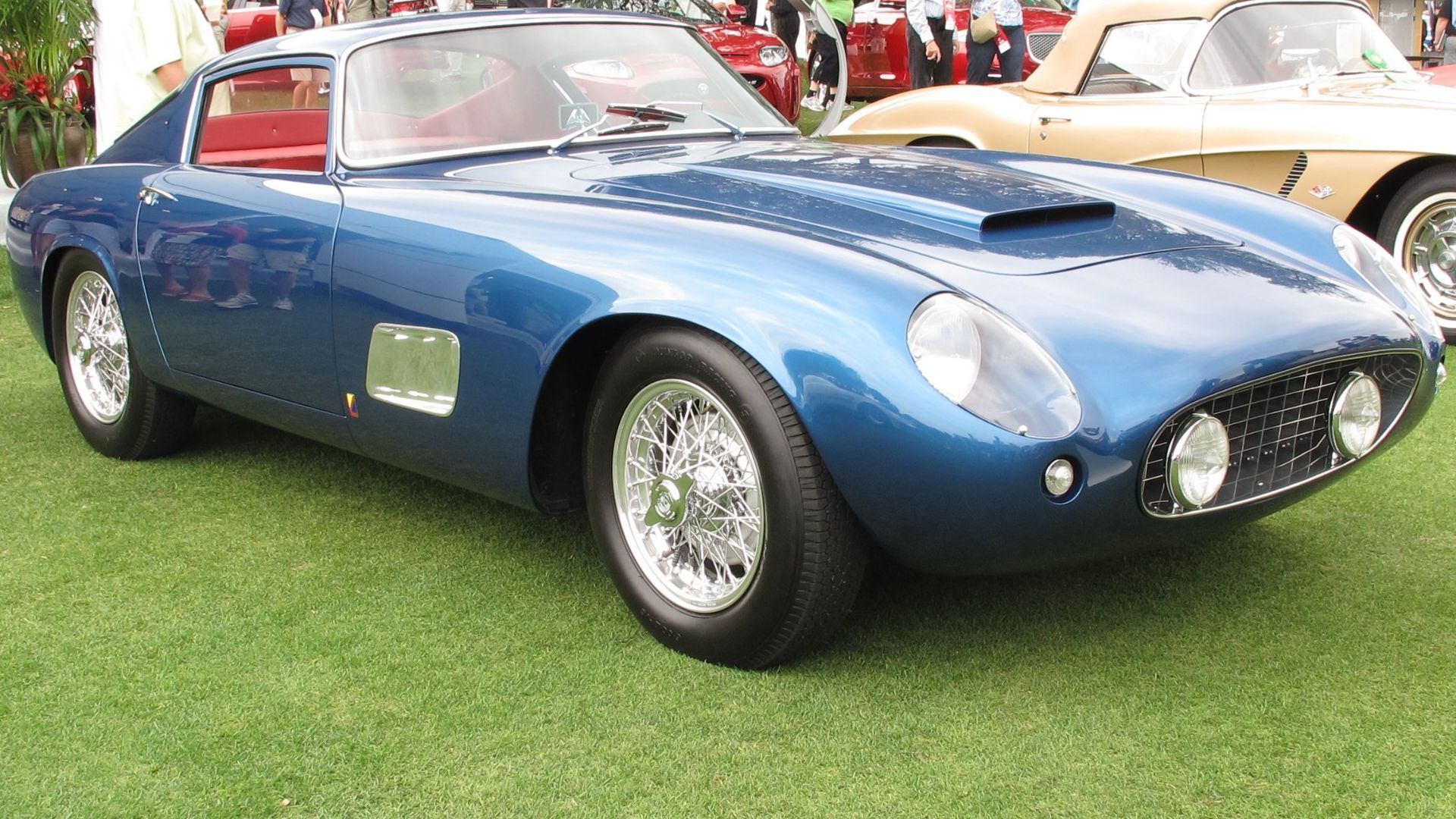 LarryStevens, Wikimedia Commons
LarryStevens, Wikimedia Commons
1959 Scaglietti Corvette
Laughlin shipped the three chassis to Italy’s famed designer and constructor Sergio Scaglietti’s workshop, next to Ferrari’s factory in Modena, Italy. After a long wait, three cars made the return trip over the Atlantic Ocean. Laughlin’s came with a 315 hp Ramjet fuel-injected V8.
 Stefano Mecchia, Wikimedia Commons
Stefano Mecchia, Wikimedia Commons
1959 Scaglietti Corvette
But that was the end of the line (so to speak). Chevrolet didn’t really want to put the design into production, and Scaglietti’s next-door neighbor wasn’t happy either. Enzo Ferrari reputedly saw the cars in the shop and learned about the three Texans behind the order, including Shelby.
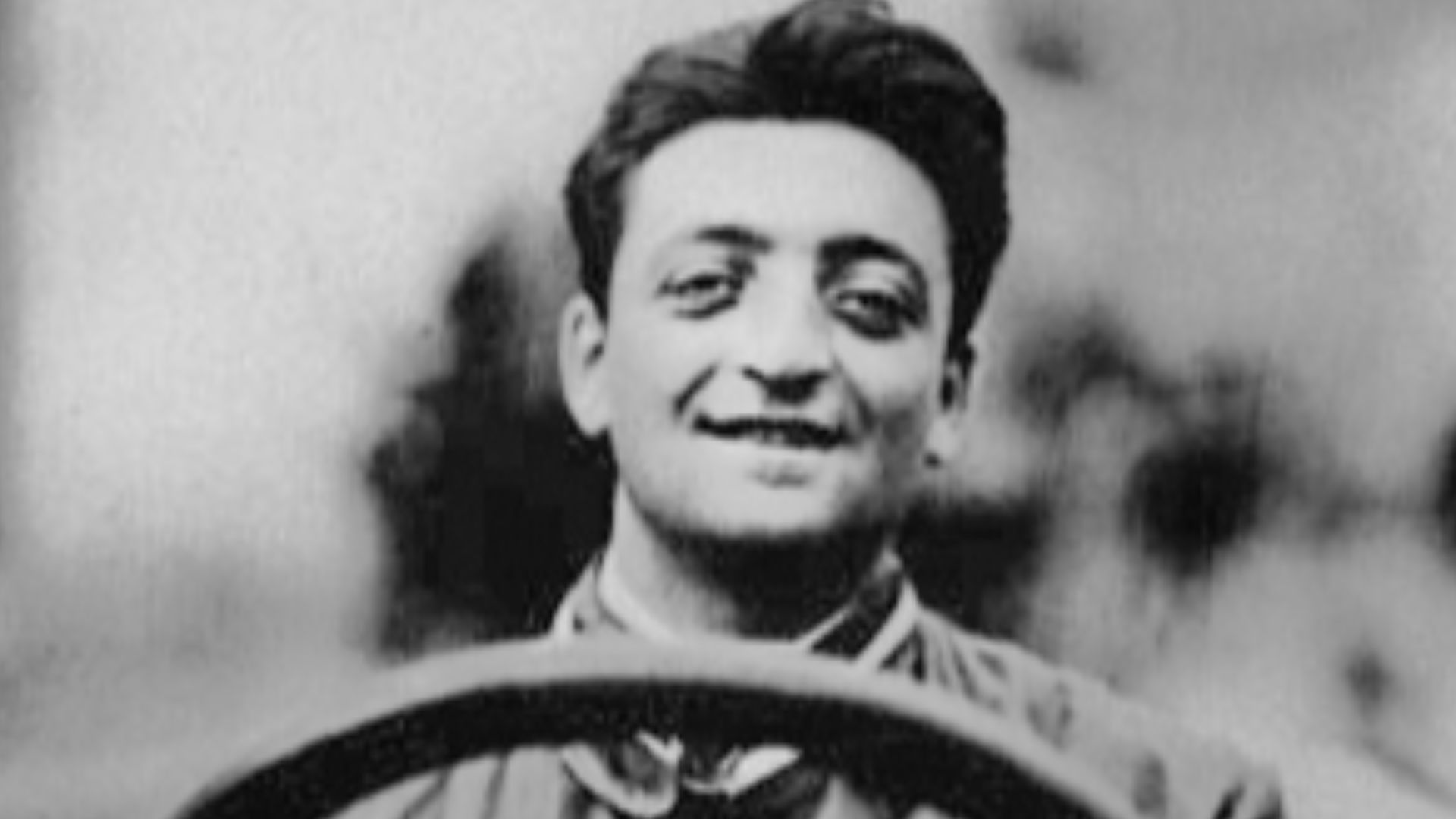 Unknown authorUnknown author, Wikimedia Commons
Unknown authorUnknown author, Wikimedia Commons
1959 Scaglietti Corvette
“How many are you going to do?” Ferrari asked. Scaglietti said just those three. “Good,” replied Ferrari. “If you do one more, you’ll never do another car for me”. Enzo probably noticed that the coupes were pretty similar to the Ferrari Tour de France too. But Shelby had his foot in the door.
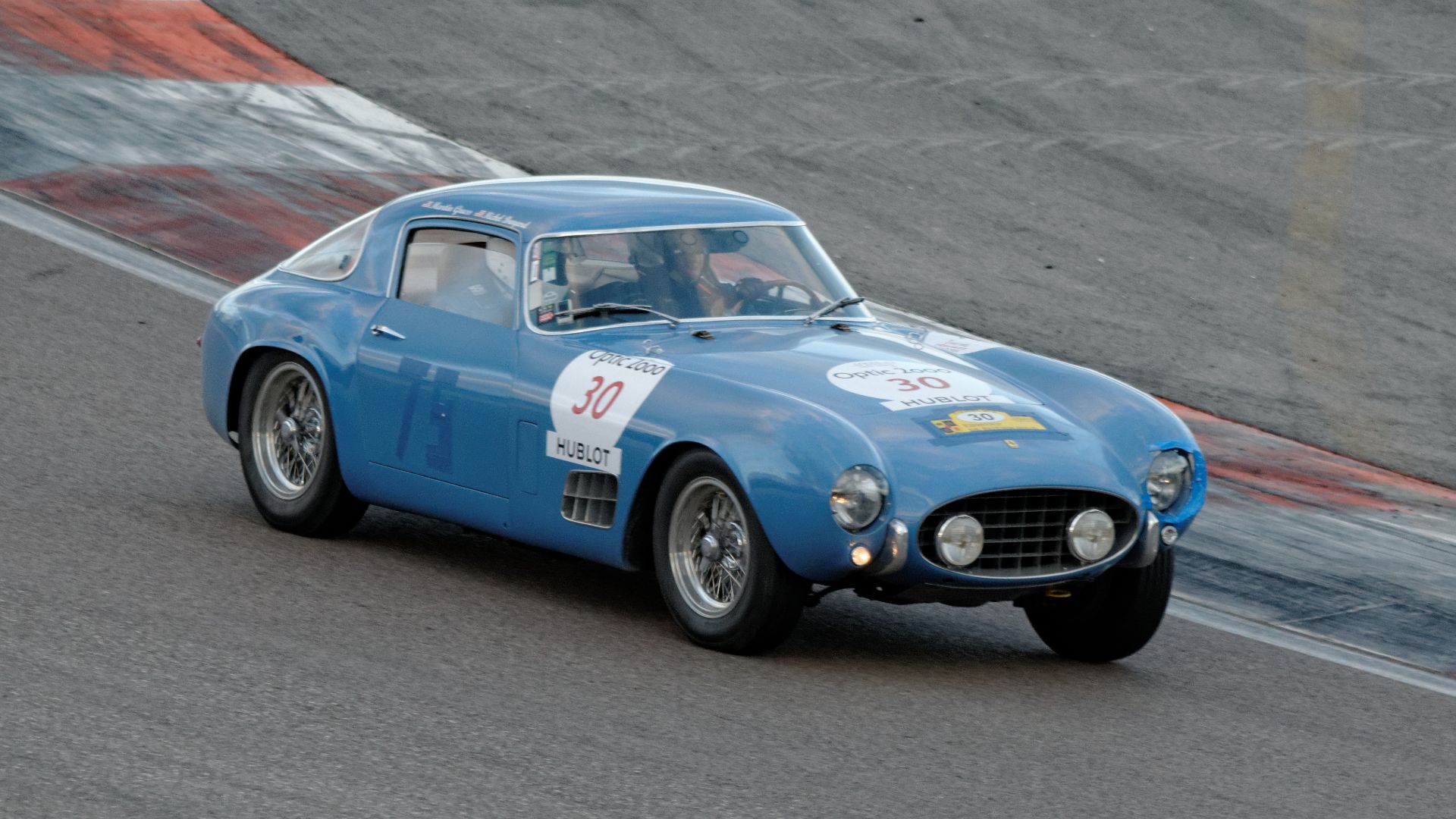 Francis of Dijon, CC BY-SA 3.0, Wikimedia Commons
Francis of Dijon, CC BY-SA 3.0, Wikimedia Commons
Final Lap
In 1960, the relentless Texan driver finally had to relent. In between the pain and the meds, he was a menace on the road—and not in a good way. Doctors and the pain convinced him he had to stop racing. But he wasn’t about to leave the world of the racetrack. He was just beginning.
1962 To 1967 Shelby Cobra 289
The Scaglietti project had been a diversion, but the Shelby Cobra 289 was a genuine Shelby-led production, and it would make his name all over again. He learned the Ace sports roadster was in trouble. Bristol engines were no more, so England’s AC Cars would be giving up on the line.
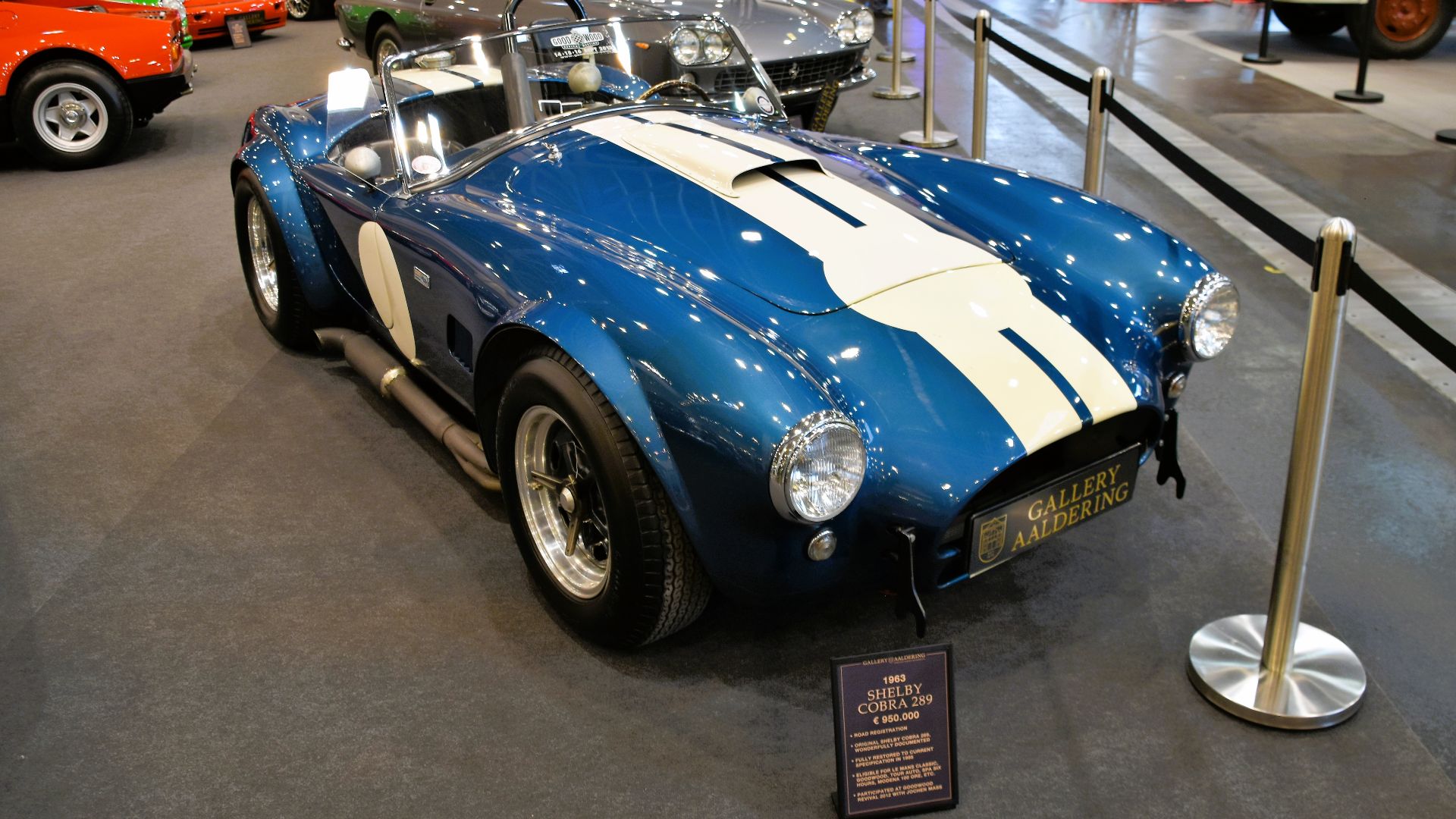 Charles from Port Chester, New York, Wikimedia Commons
Charles from Port Chester, New York, Wikimedia Commons
1962 To 1967 Shelby Cobra 289
But Shelby liked the frame, so he shipped Ace bodies to Venice Beach for an ambitious makeover. He plunked in a Ford 289 V8 putting out 271 hp, turning a discreet roadster into a powerful beast, and handily beating Ferraris and Jaguars on racetracks across the United States.
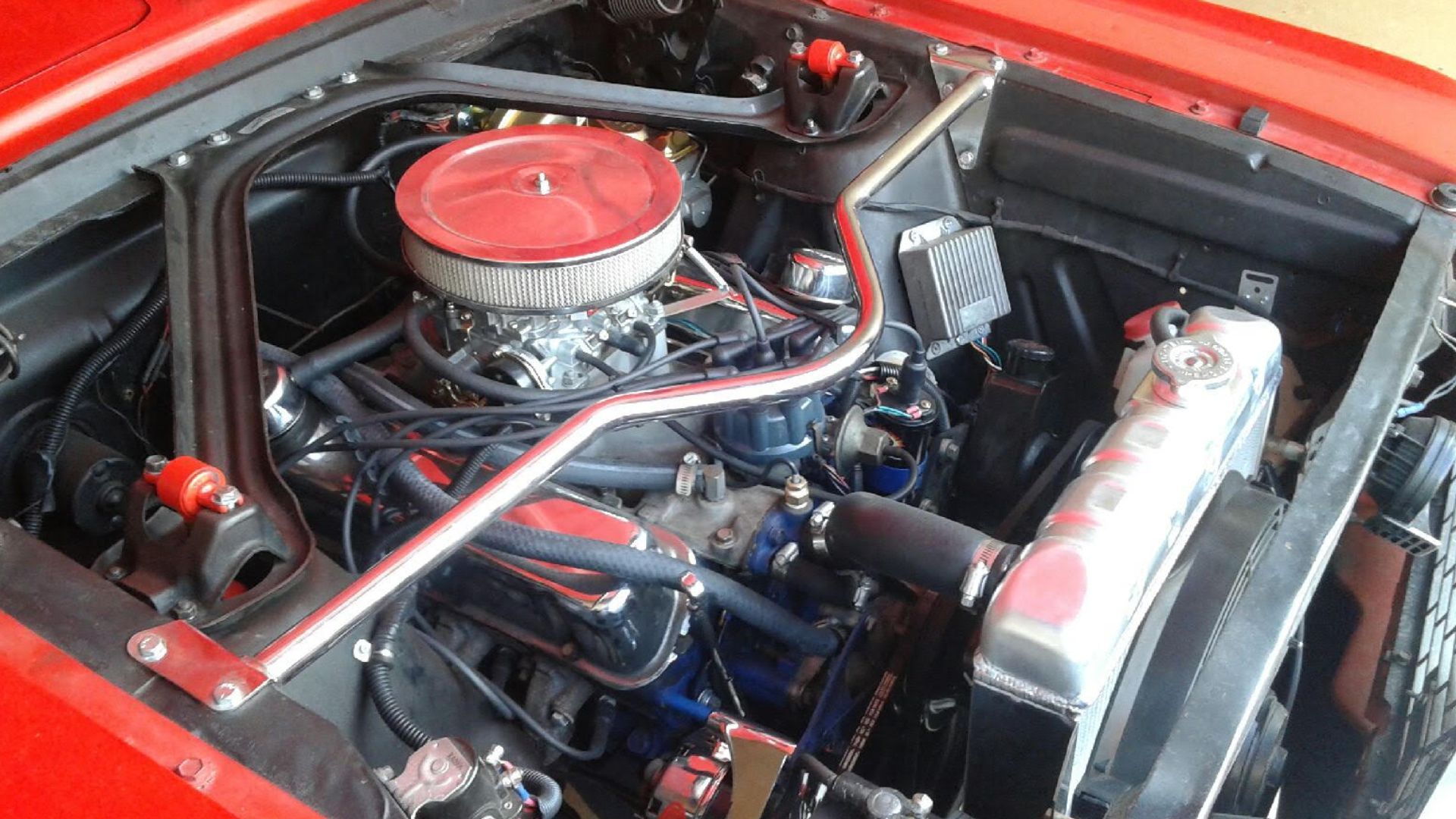 Kaleodu at English Wikipedia, Wikimedia Commons
Kaleodu at English Wikipedia, Wikimedia Commons
1962 To 1967 Shelby Cobra 289
Seeing the bigger picture, Shelby went to Europe to promote his mashup, and Ford was more than happy to help out. With Cobras getting such a positive buzz, Shelby was able to sell these exquisite racing machines to avid competitors on the amateur circuit. And more was to come.
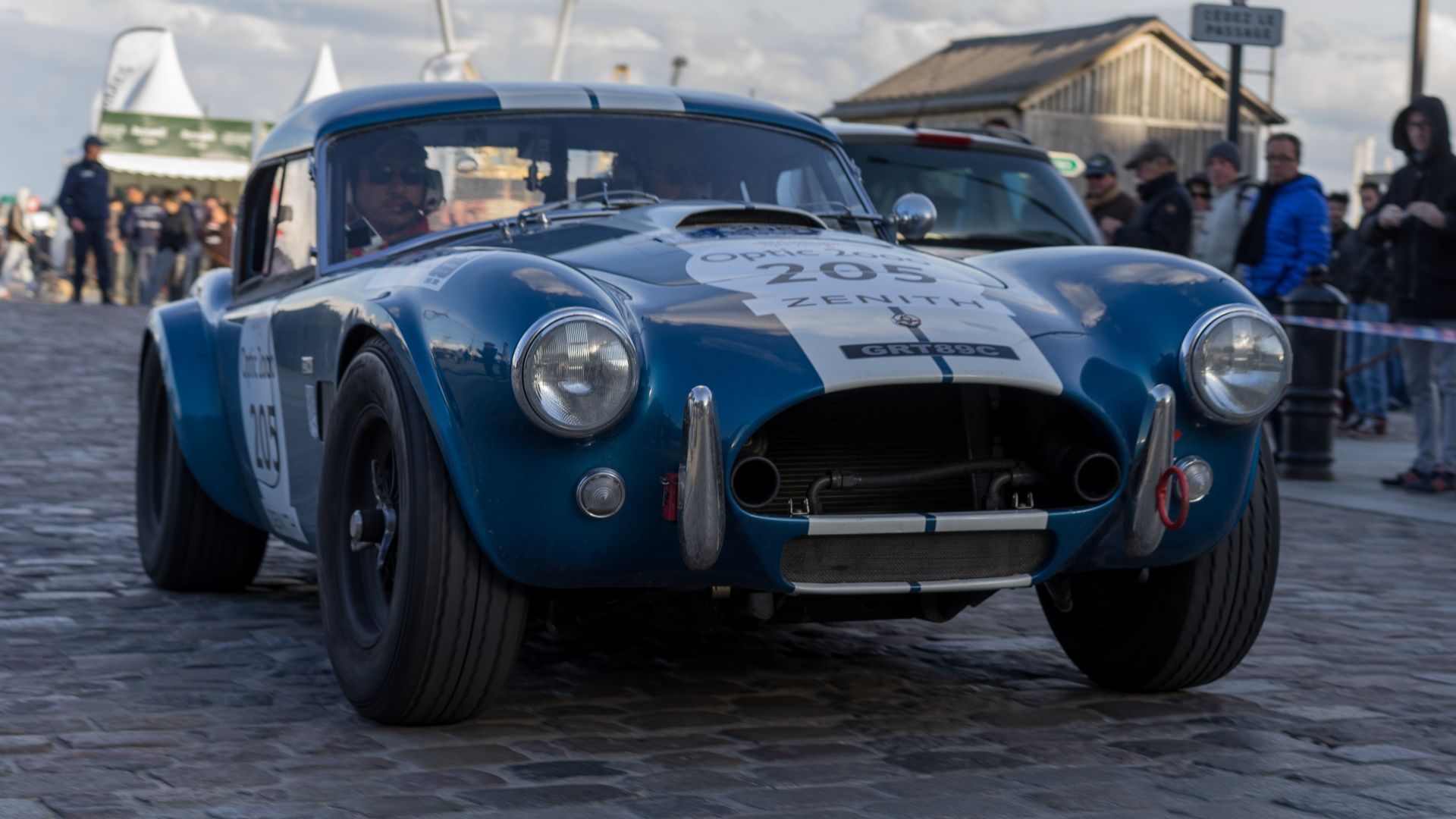 Falcon® Photography from France, Wikimedia Commons
Falcon® Photography from France, Wikimedia Commons
1964 To 1968 Sunbeam Tiger
Another British concern, Sunbeam, was making a dependable but unambitious four-cylinder roadster. But the company knew that their little Alpine had a steep hill to climb in order to get racetrack cred. So they asked Shelby to do the Cobra trick on this rather conventional little car.
1964 To 1968 Sunbeam Tiger
Shelby obliged, turning the Alpine into a muscle car called the Sunbeam Tiger. It had a Ford 260 (later a 289), making the Tiger the first roadster out of the UK to deliver credible performance, thanks to that V8 engine. Some 7,000 of these Tigers hit the roads between 1964 and 1968.
1965 Shelby GT350R
Then Shelby got Mustangs to gallop faster starting in 1965, and the GT350R trotted fastest. You couldn’t drive them down the street, but you could race them to the finish line. It had a 289 V8 like the regular GT350, but produced nearly 400 hp and came with speed-inducing add-ons.
1964 To 1969 Ford GT40
Shelby’s next project wasn’t even a Shelby project—at least not at first. By the time Shelby got his hands on a Ford GT40, the company’s designers and engineers in England had already done their work in England. But Shelby knew how to motivate drivers and fine tune cars.
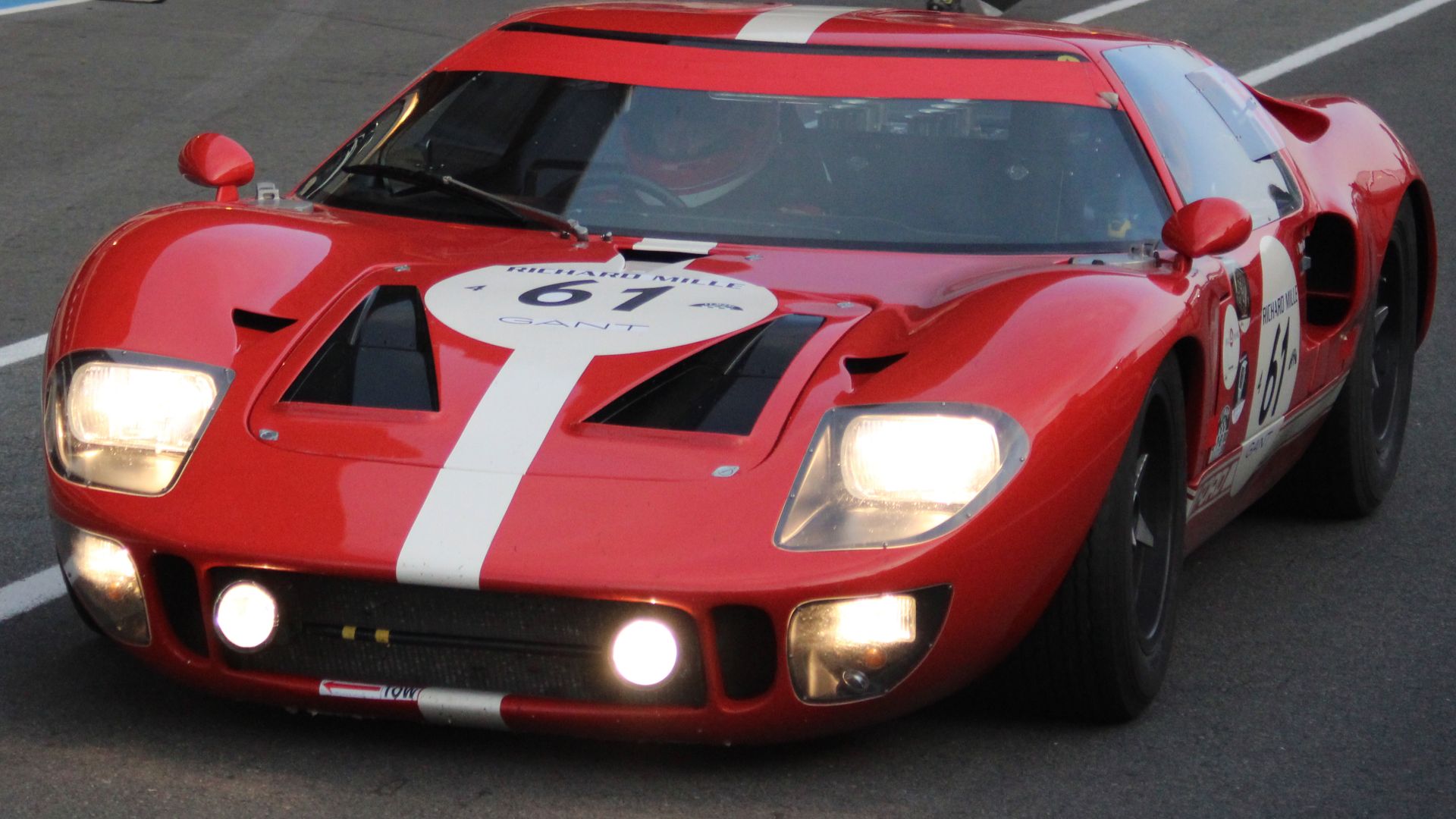 Eric Manesse, Wikimedia Commons
Eric Manesse, Wikimedia Commons
1964 To 1969 Ford GT40
Stung by Ferrari’s refusal to sell itself to Ford, the US company was determined to humiliate Enzo and his reputation. Shelby took this redesigned Lola Mk6 with a new 289 V8 engine, and oversaw four consecutive 24 Hours of Le Mans, trouncing Ferrari from 1966 to 1969.
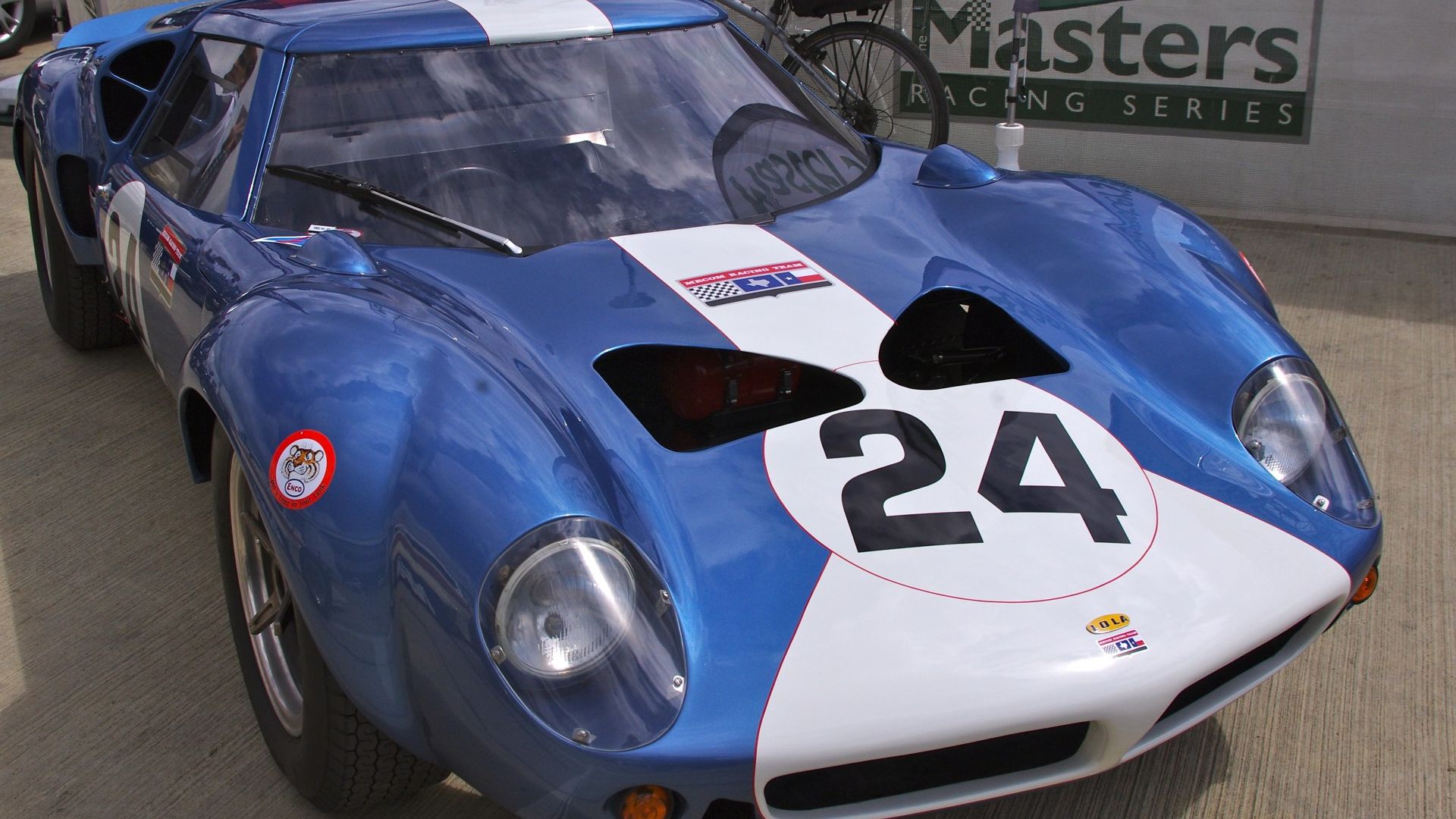 David Merrett, Wikimedia Commons
David Merrett, Wikimedia Commons
1964 To 1969 Ford GT40
In the 2019 movie Ford v Ferrari, Shelby (Matt Damon) makes a bet with Henry Ford II (Tracy Letts): If Ken Miles (Christian Bale) wins the 24 Hours of Daytona, then it’s off to Le Mans. But if he doesn’t, Shelby will give up his company. Racing legend Miles ends up winning the race.
 Ford vs Ferrari (2019) - Shelby explains the loss at Le Mans to Ford, TheBestMovieClipsOnThePlanet
Ford vs Ferrari (2019) - Shelby explains the loss at Le Mans to Ford, TheBestMovieClipsOnThePlanet
1965 Shelby Cobra Daytona Coupe
The Cobra Daytona Coupe was Shelby’s answer to an aerodynamic problem. Even if existing Cobras were tearing up the track, it wasn’t doing so for every track. Le Mans had lots of straight stretches, where the Cobra’s poor airflow was slowing it down. So back to the drawing board!
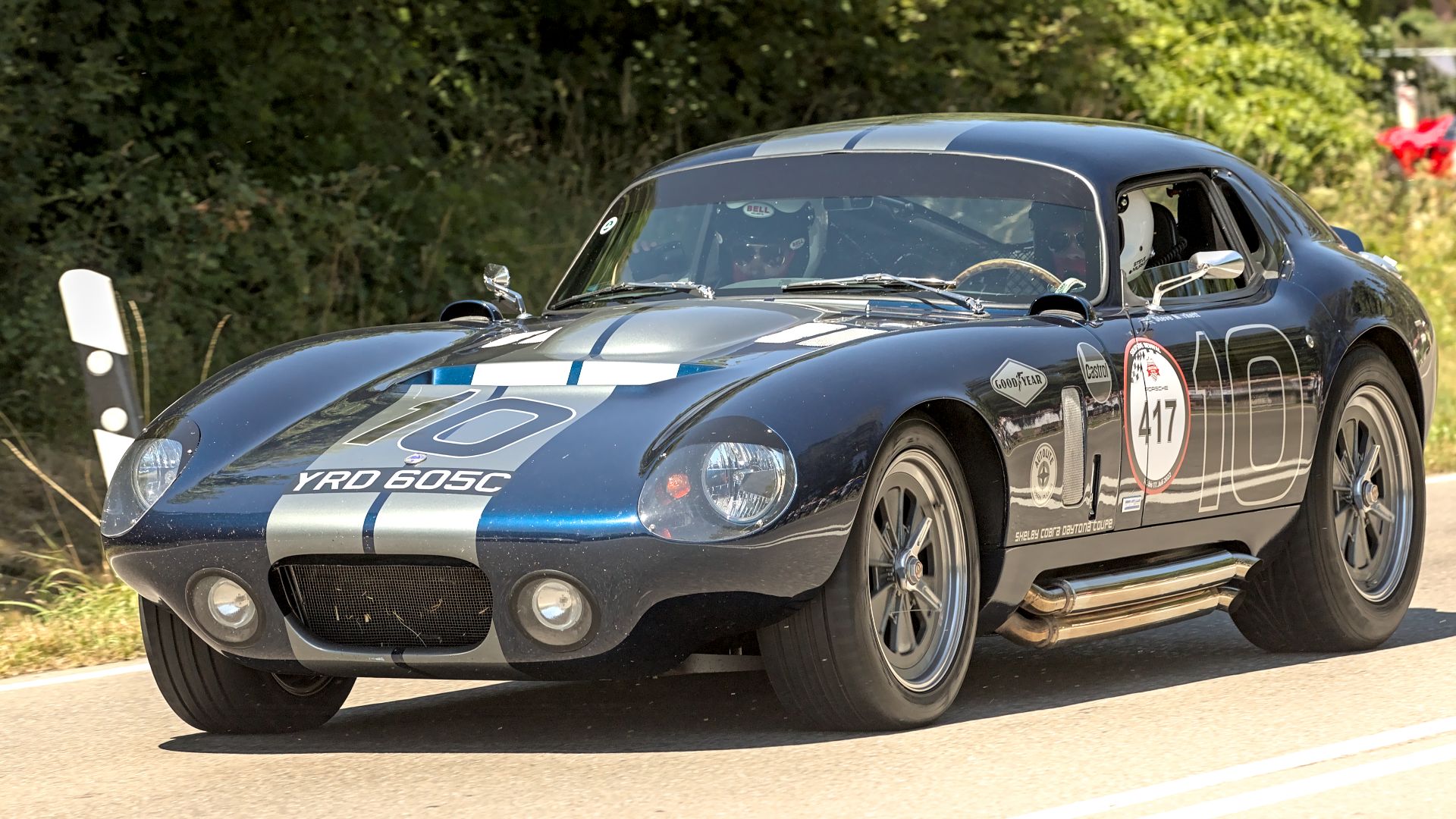 Alexander Migl, Wikimedia Commons
Alexander Migl, Wikimedia Commons
1965 Shelby Cobra Daytona Coupe
Shelby took the basic Cobra and stretched it out, moved the suspension, and smoothed the curves. It wasn’t suitable for street racing. But it won the 1965 GT Championship, and was a great success for Ford’s—and Shelby’s—reputation, a shining example of American ingenuity.
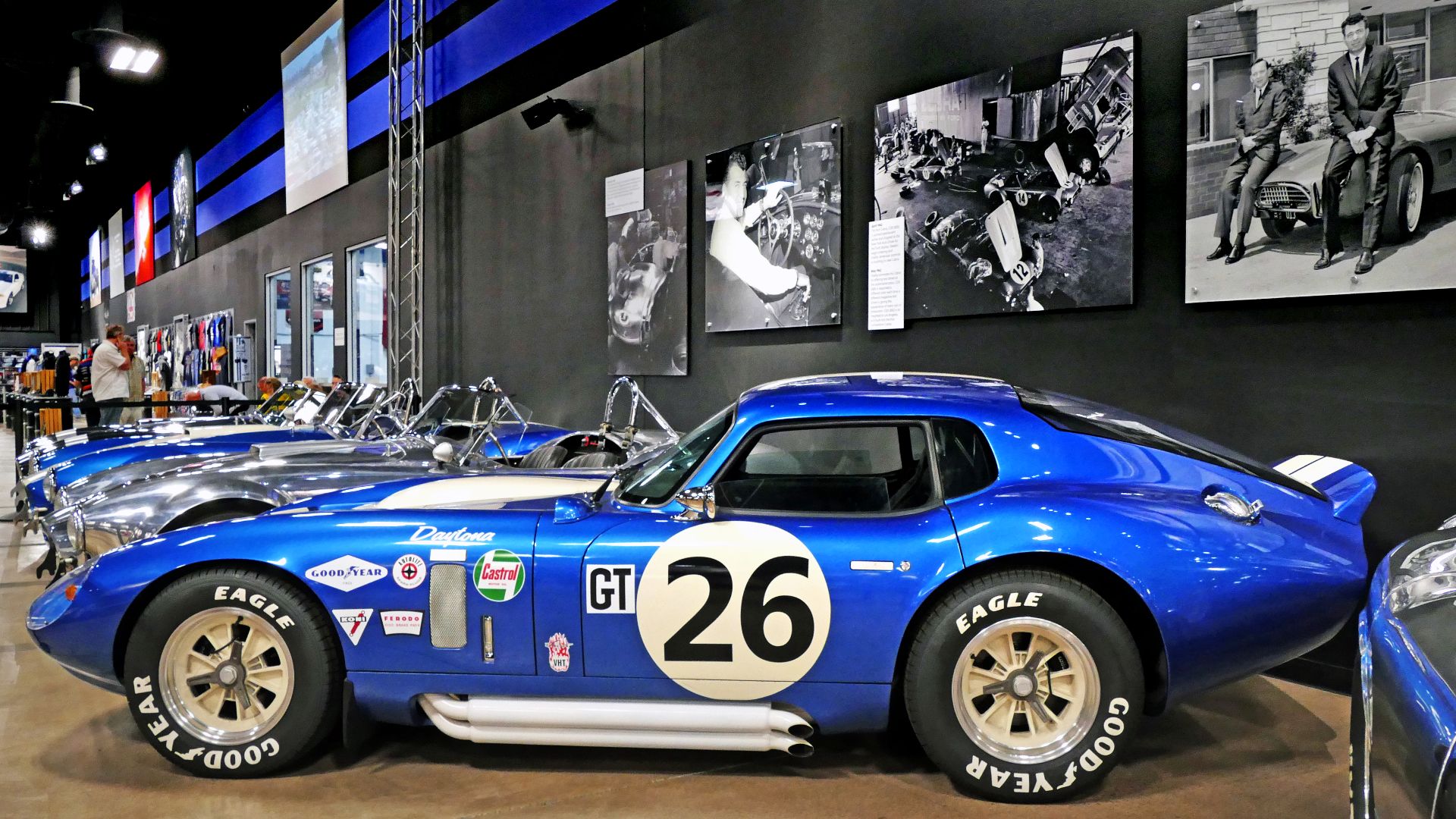 Bernard Spragg. NZ from Christchurch, New Zealand, Wikimedia Commons
Bernard Spragg. NZ from Christchurch, New Zealand, Wikimedia Commons
1966 Shelby GT350
The Shelby GT350 Convertible was a secret affair. As the 1966 model year wrapped up, Shelby applied the open-air concept to his high-performance version of the Ford Mustang, serving up six examples to friends and family, or to prototype a possible production run of this variation.
1967 GT500
The 1967 GT500 marked a major transition of the Shelby Mustang from a barebones racing projectile to a sports car with both power and creature comforts. This GT coupe ran on a Ford 427 V8 engine, supposedly putting out 335 hp, but in reality it was something nearing 400 hp.
1967 GT500 Super Snake
Though the 1967 GT500 upped the stakes for a muscle car, Shelby wanted even more muscle, hence the humbly named Super Snake. Shelby plunked a 427 V8 from a GT40 into a Mustang, with 500 hp pushing it to 170 mph. But the Super Snake never slithered to the production line.
 Revology Car Review | 1967 Shelby GT500 Super Snake in Dark Blue Metallic, Revology Cars
Revology Car Review | 1967 Shelby GT500 Super Snake in Dark Blue Metallic, Revology Cars
1967 Shelby GT500KR
When Shelby learned Chevrolet was calling its new Corvette the “King of the Road,” he raced to register the name himself, hence the “KR” in GT500KR. He crowned the car with Ford’s new muscle engine, the 428 Cobra Jet, and added other performance boosts, making it a legend.
1967 Toyota 2000GT SCCA
Japan wasn’t a big name in the world of high-performance cars when Toyota unveiled the 2000GT in 1967. Its 2L V6 put out just 150 hp, but the model somehow nudged the edges of racecar credibility. Shelby got to work on it, and the highly successful 2000GT SCCA was born.
 When Shelby and Toyota Joined Forces to Compete in the SCCA Championship, Chris VS Cars
When Shelby and Toyota Joined Forces to Compete in the SCCA Championship, Chris VS Cars
1968 Shelby EXP 500 “Green Hornet”
The “Green Hornet” was Shelby again pushing the Ford Mustang to the max. This 1968 prototype featured a fuel-injected 390 V8 engine, all-wheel disc brakes, and an independent rear suspension. It rode great, but the predicted production cost was just too much to handle.
 THE GREEN HORNET - 1968 Shelby Mustang EXP-500 Prototype - BARRETT-JACKSON, Barett-Jackson
THE GREEN HORNET - 1968 Shelby Mustang EXP-500 Prototype - BARRETT-JACKSON, Barett-Jackson
1968 Shelby Lonestar
Ford and Shelby had parted ways by now, so the Detroit automaker nixed the name Shelby Cobra III. Shelby then named it after Texas. Built on a streamlined GT40 platform, with a smooth V8 engine and suspension, the prototype really was a lone star, never heading into production.
 1968 Shelby Cobra Mk III LoneStar - Mike Shoen's 1 of 1 289 HiPo Shelby Concept Car, BarryTsGarage
1968 Shelby Cobra Mk III LoneStar - Mike Shoen's 1 of 1 289 HiPo Shelby Concept Car, BarryTsGarage
1984 To 1986 Dodge Omni GLH
Shelby switched from hot cars to hot chili in the 1970s, but got lured back to the car racket when Ford’s Lee Iacocca jumped to Chrysler. Shelby turbocharged the four-cylinder Dodge Omni with 175 hp to reach 60 mph in under seven seconds—and “GLH” rightly stood for “Goes Like Hell”!
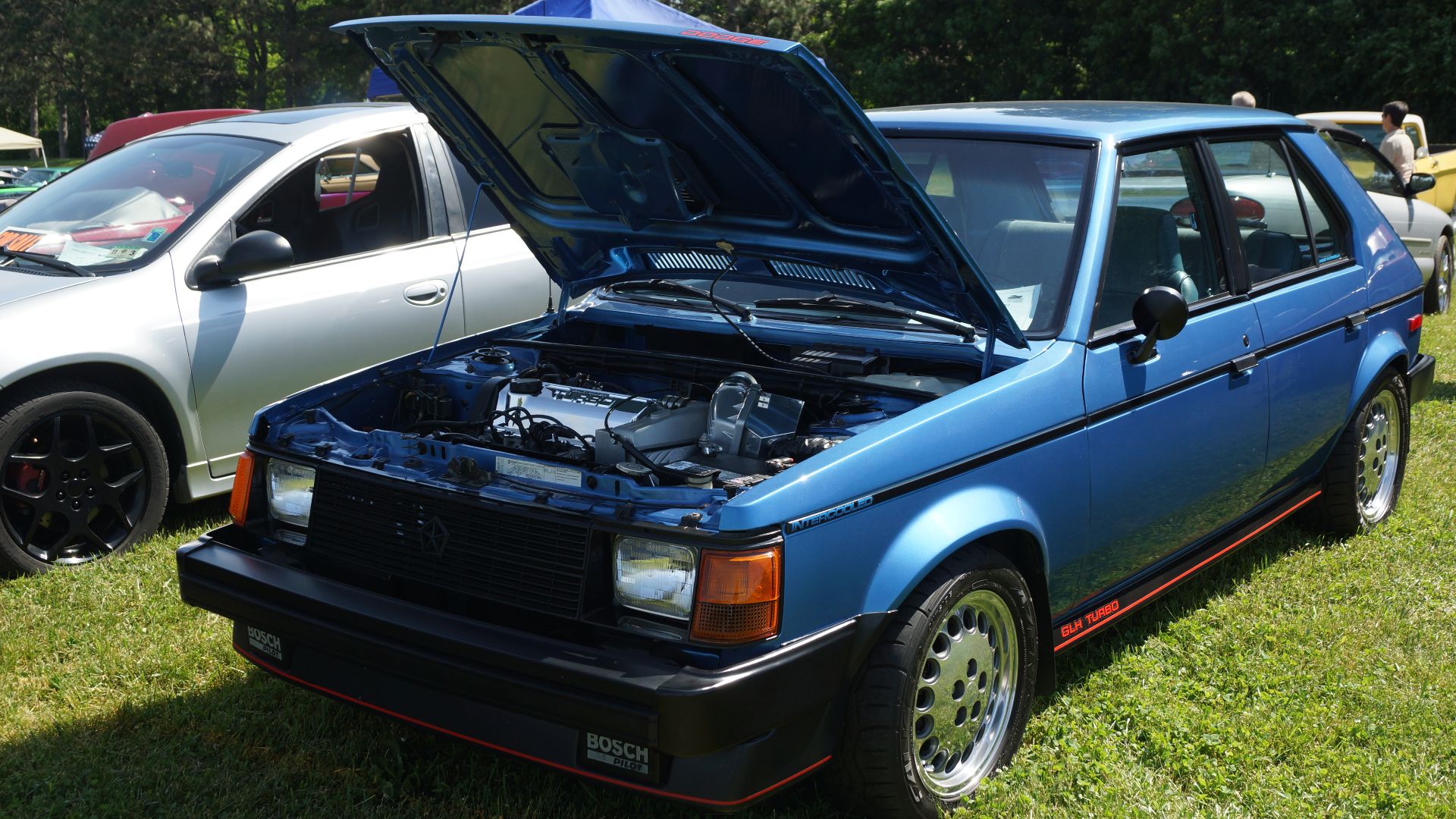 Greg Gjerdingen from Willmar, USA, Wikimedia Commons
Greg Gjerdingen from Willmar, USA, Wikimedia Commons
1983 To 1987 Dodge Shelby Charger
“L” was for “lacklustre” when it came to Dodge’s “L-body” Charger. Shelby’s turbocharging made for a swift mass-produced muscle car available at your local Dodge dealership. Then he bought the last thousand, again added 175 hp, and dubbed them his “GHLS”—”Goes Like Hell S’more”!
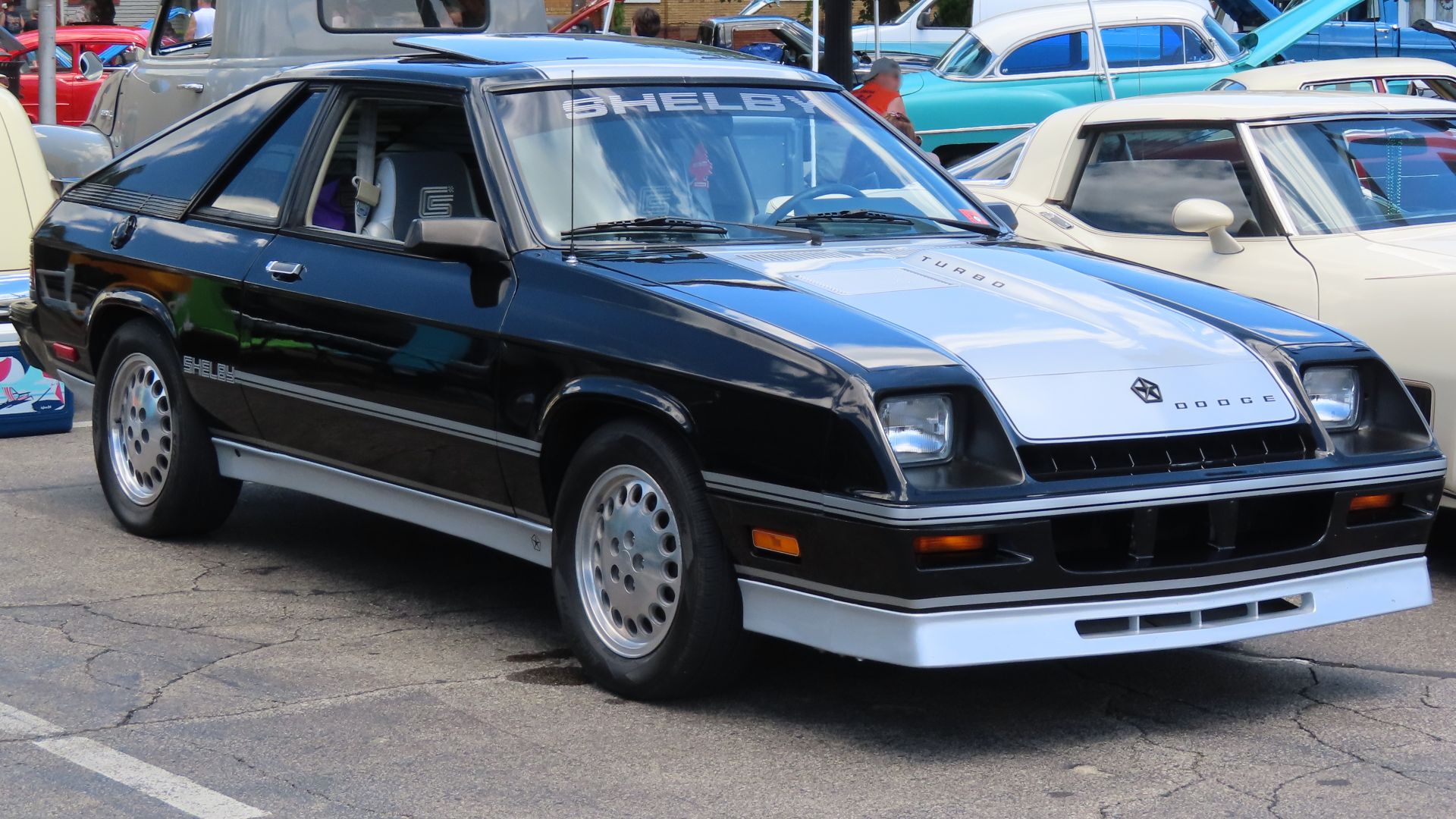 MercurySable99, Wikimedia Commons
MercurySable99, Wikimedia Commons
1989 Shelby Dakota
The Dodge Dakota was a lightweight pickup truck that Shelby agreed to overhaul. He replaced a 3.9L V6 with a 5.2L V8 using throttle-body injection. With such a light frame, the Dakota could take 175 hp and push 60 mph in 8.5 seconds and cover a quarter-mile in 15.6 seconds.
1992 Dodge Viper RT/10
Chrysler joined up with Shelby to recapture the spirit of his Cobra days, but with more power and performance. The result was the Dodge Viper RT/10. Its 8L V10 engine put out 100 hp and enough torque to make 60 mph in 4.6 seconds, and did time as an Indy 500 pace car.
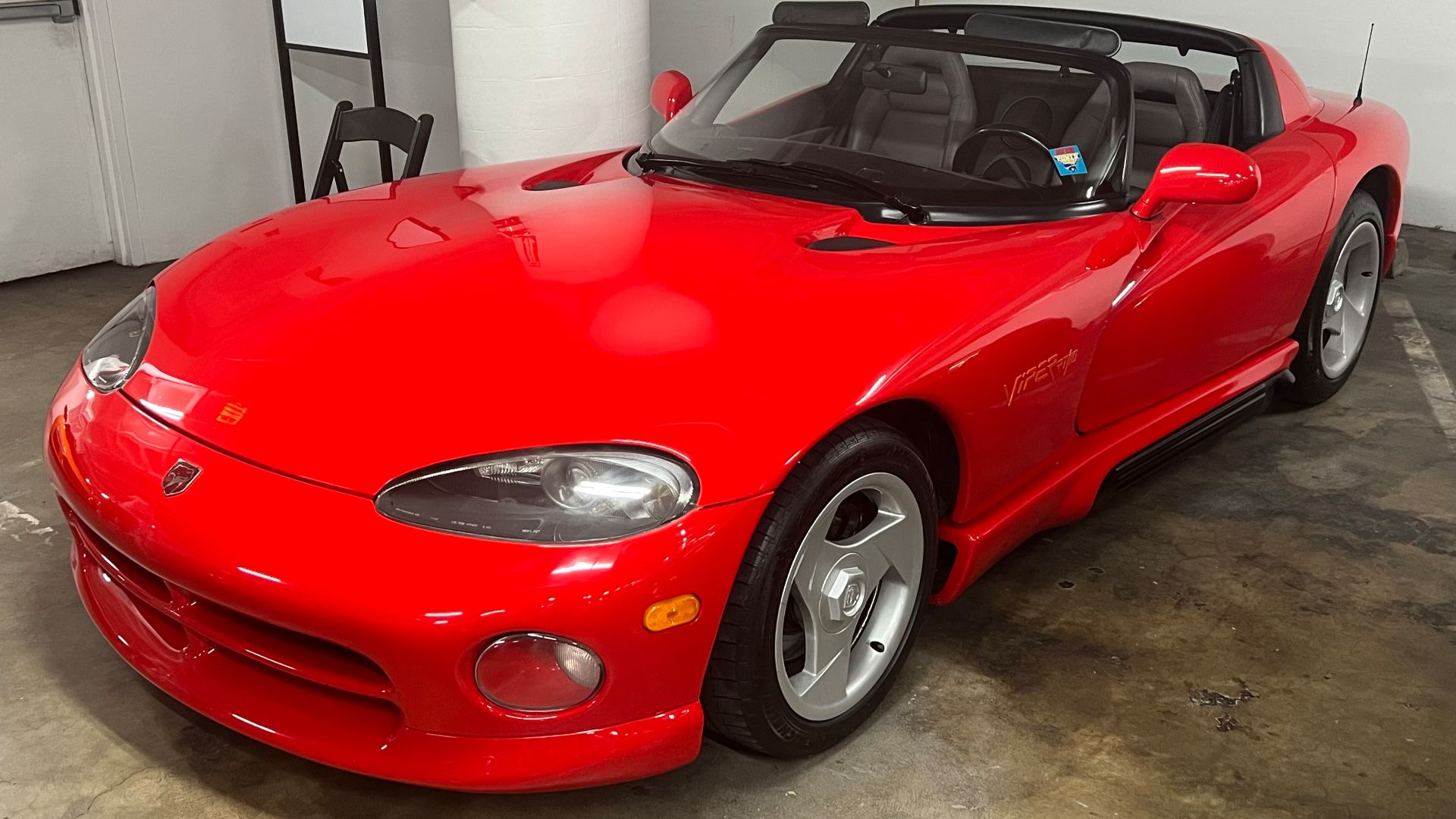 TaurusEmerald, Wikimedia Commons
TaurusEmerald, Wikimedia Commons
1999 Shelby Series 1
Spurred on by Viper’s success, Shelby got back into building cars on his own. A retro power roadster would pay tribute to the middle of the 1960s, but it was all cutting-edge under the hood. With an Oldsmobile V8 engine putting out 320 hp, the car could hit 60 mph in four seconds.
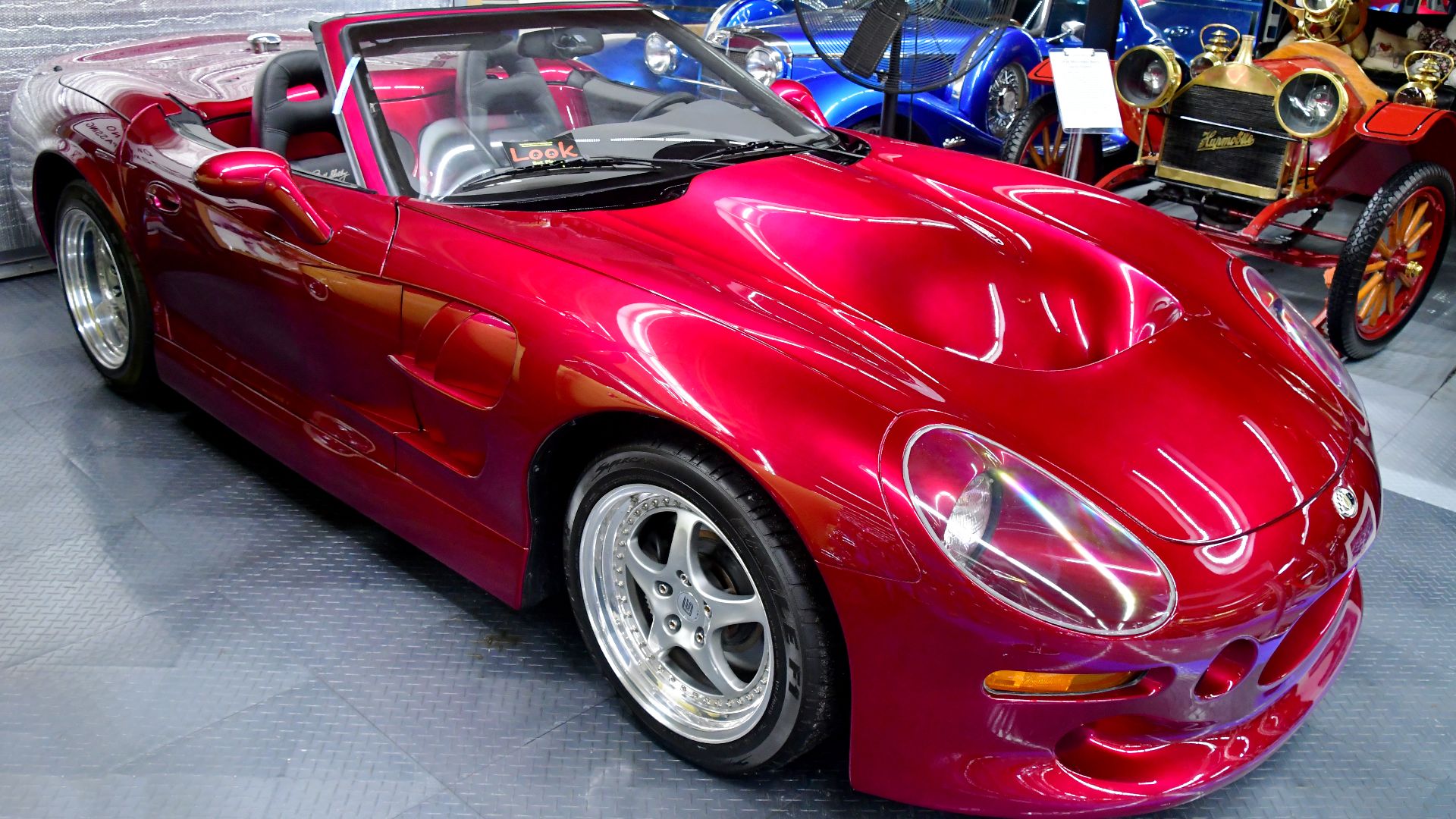 Eric Friedebach, Wikimedia Commons
Eric Friedebach, Wikimedia Commons
2006 And 2007 Shelby GT-H
Shelby and Mustang had parted ways decades before, but Shelby was consulted on a new look and performance. Marking 40 years since the original GT-H, the update came suited up with a 5.4L V8 offering 500 hp, a bold array of racing stripes, and four thunderous exhaust pipes.
 2006 Ford Mustang Shelby GT-H Hertz Rent-A-Racer!, samspace81
2006 Ford Mustang Shelby GT-H Hertz Rent-A-Racer!, samspace81
2015 Shelby GT350R
Carroll Shelby died in 2012, but his marque lives on. Ford’s 2015 Shelby GT350R offered 526 hp with a 5.2L V8 pushing 9,000 rpm. The whole outfit meant 60 mph could be yours in just 3.9 seconds. Besides the raw speed, the 2015 model offered precision driving with great turns.
2024 Shelby F-150 Super Snake
And Shelby American continues to put out impressive vehicles. The company’s latest take on Ford’s classic F-150 pickup offers 400 hp upgradable to 785 hp, with a heavy-duty suspension using FOX coilover shocks. Inside are black leather covers paired with official Shelby floor mats.
 Unleashing the 2024 Shelby F150 Super Snake (Review + Test Drive), BamaCooley
Unleashing the 2024 Shelby F150 Super Snake (Review + Test Drive), BamaCooley
A Powerful Legacy
Carroll Shelby’s brilliance is seen everywhere in the power and design of America’s high-performance cars past and present. It’s an impressive legacy left by a man who pushed past bad health to triumph on and off the race track, not content to just watch from the sidelines.
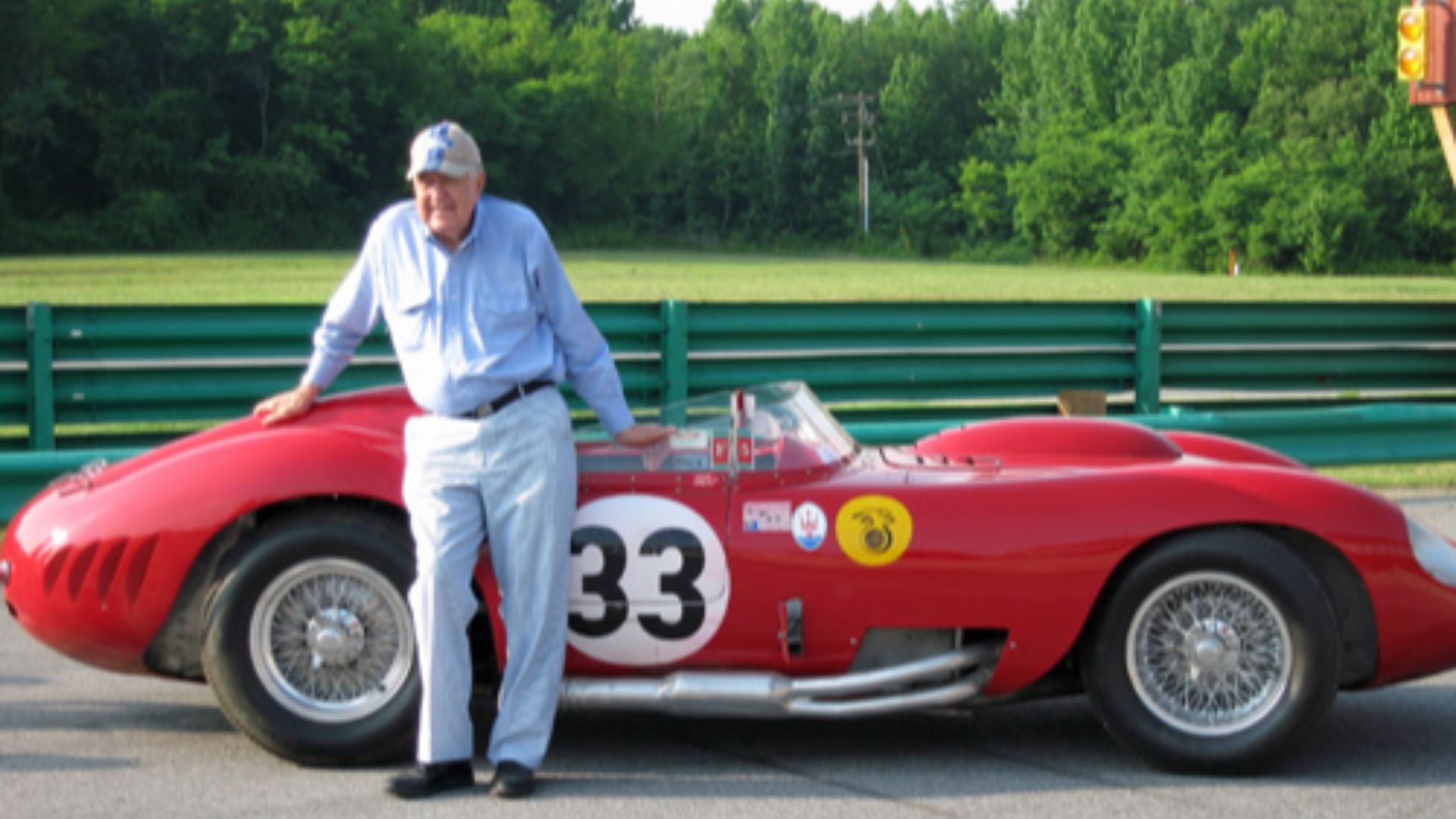 Sherry Lambert Stapleton, Wikimedia Commons
Sherry Lambert Stapleton, Wikimedia Commons
You May Also Like:
Inside Carroll Shelby’s Legendary Garage
Ford Vs Ferrari Was Never Just About Racing





